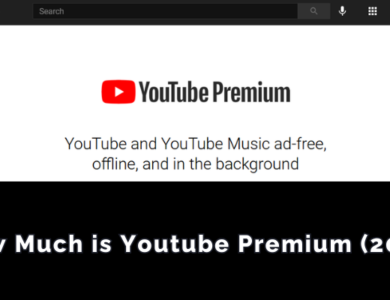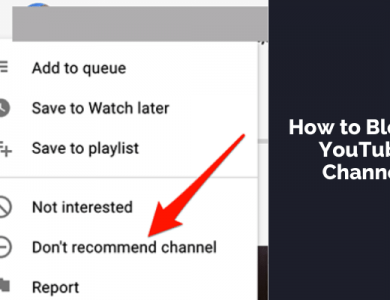How Much Does YouTube Pay for 1000 Views? (2025)

YouTube has become a lucrative platform for content creators worldwide, offering numerous opportunities to earn money through their videos. As one of the most popular video-sharing sites, YouTube’s monetization program allows creators to turn their passion into a source of income. However, understanding how much YouTube pays per 1000 views can be complex, given the various factors influencing earnings.
For aspiring creators, grasping the intricacies of YouTube monetization is crucial. It enables them to set realistic expectations, optimize their content strategy, and ultimately increase their revenue. In this blog, we will provide a comprehensive overview of YouTube payments per 1000 views in 2024. We’ll explore how the monetization process works, the factors affecting earnings, regional differences, and practical tips to maximize your YouTube income. Whether you’re a seasoned YouTuber or just starting, this guide will help you navigate the financial landscape of YouTube in 2024.

Contents
How YouTube Monetization Works
YouTube’s monetization program allows creators to earn money from ads displayed on their videos. To join the YouTube Partner Program (YPP), creators need at least 1,000 subscribers and 4,000 watch hours over the past 12 months. Once accepted, they can start monetizing their content through Google AdSense.
AdSense plays a crucial role in YouTube earnings. It connects advertisers with content creators, displaying ads on videos that generate revenue based on viewer interactions. Creators earn money through Cost Per Mille (CPM) for every 1,000 ad views and Cost Per Click (CPC) when viewers click on the ads. The revenue is split between YouTube and the creator, with creators typically receiving 55% of the ad revenue.
Beyond ads, YouTube offers additional revenue streams to enhance earnings. Channel memberships allow fans to pay a monthly fee for exclusive content and perks. Super Chats enable viewers to pay to have their messages highlighted during live chats, often used during live streams to stand out. Merchandise shelf integration lets creators sell branded products directly from their channel, providing another income source.
These diverse monetization options enable creators to build a sustainable income on YouTube, leveraging their audience’s engagement and loyalty.
Factors Influencing YouTube Earnings
Understanding the factors that influence YouTube earnings is essential for creators aiming to maximize their income. Two key metrics in this context are CPM (Cost Per Mille) and RPM (Revenue Per Mille). CPM refers to the amount advertisers pay per 1,000 ad views, while RPM represents the revenue earned per 1,000 video views after YouTube takes its share. RPM provides a clearer picture of actual earnings, as it includes all revenue sources, not just ads.
Several factors impact these metrics and overall earnings. The niche or content category is a significant determinant. For instance, niches like finance, technology, and health tend to attract higher CPM rates due to the high value of their audiences to advertisers. In contrast, more general or entertainment-focused content may have lower CPM rates.
Audience demographics also play a crucial role. Advertisers are willing to pay more to target specific demographics, such as viewers from high-income countries, certain age groups, or professional backgrounds. Therefore, creators with an audience in high CPM regions like the United States, Canada, and Europe typically earn more.
Viewer engagement is another critical factor. High engagement, indicated by likes, comments, shares, and watch time, signals to YouTube that the content is valuable, leading to better ad placement and potentially higher earnings. The types and placement of ads, such as pre-roll, mid-roll, and banner ads, also influence revenue. Pre-roll ads, for instance, often have higher CPM rates but can impact viewer retention if overused.
By understanding and optimizing these factors, creators can significantly enhance their YouTube earnings.
Average Earnings Per 1000 Views in 2024
In 2024, the average earnings per 1,000 views on YouTube, commonly referred to as RPM (Revenue Per Mille), can vary widely depending on several factors. On average, YouTube creators can expect to earn between $1 to $5 per 1,000 views, with some niches and regions experiencing higher rates.
The variance in RPM is largely influenced by the content niche. For example, channels focused on finance, technology, and health often enjoy higher RPMs, ranging from $5 to $15 per 1,000 views, due to the higher value advertisers place on these audiences. Conversely, entertainment or vlogging channels might see lower RPMs, closer to the $1 to $3 range, as their content appeals to a broader audience with less targeted advertising potential.
Geographical location also plays a significant role in determining average earnings. Creators with a substantial viewership from countries with high CPM rates, such as the United States, Canada, Australia, and Western Europe, typically see higher RPMs. In contrast, creators with a majority of viewers from regions with lower CPM rates, like Southeast Asia or Africa, might experience lower earnings.
Recent surveys and studies indicate that the median RPM for YouTube channels globally is around $2.50 per 1,000 views. However, this figure can fluctuate based on the aforementioned factors. For instance, a tech channel with an engaged audience in North America could easily surpass the $10 RPM mark, while a general entertainment channel with a global audience might hover closer to the lower end of the spectrum.
Understanding these averages helps creators set realistic expectations and strategize effectively to maximize their YouTube earnings in 2024.

Tips to Increase Your YouTube Earnings
Maximizing your YouTube earnings requires a strategic approach focused on content quality, audience engagement, and diversification of revenue streams. Here are some practical tips to boost your income:
- Create High-Quality Content: Consistently producing high-quality, engaging content is the foundation of a successful YouTube channel. Invest in good equipment for filming and editing, and ensure your videos are informative, entertaining, and valuable to your audience.
- Optimize for SEO: Use relevant keywords in your video titles, descriptions, and tags to improve discoverability. Research trending topics in your niche and create content that aligns with popular search terms to attract more viewers.
- Increase Viewer Engagement: Encourage viewers to like, comment, share, and subscribe. Higher engagement signals to YouTube that your content is valuable, which can lead to better ad placements and higher RPM. Regularly interact with your audience through comments, community posts, and live streams to build a loyal fan base.
- Leverage Multiple Revenue Streams: Don’t rely solely on ad revenue. Explore other monetization options such as channel memberships, Super Chats during live streams, and selling merchandise. Platforms like Patreon can also provide additional income by offering exclusive content to your most dedicated fans.
- Collaborate with Other Creators: Partnering with other YouTubers can help you reach new audiences and grow your subscriber base. Choose collaborators whose content complements yours and whose audience might be interested in your channel.
- Analyze and Adapt: Use YouTube Analytics to monitor your performance and understand what works best for your channel. Pay attention to metrics like watch time, audience retention, and traffic sources, and adjust your content strategy accordingly.
By implementing these tips, you can enhance your channel’s performance and significantly increase your YouTube earnings.








